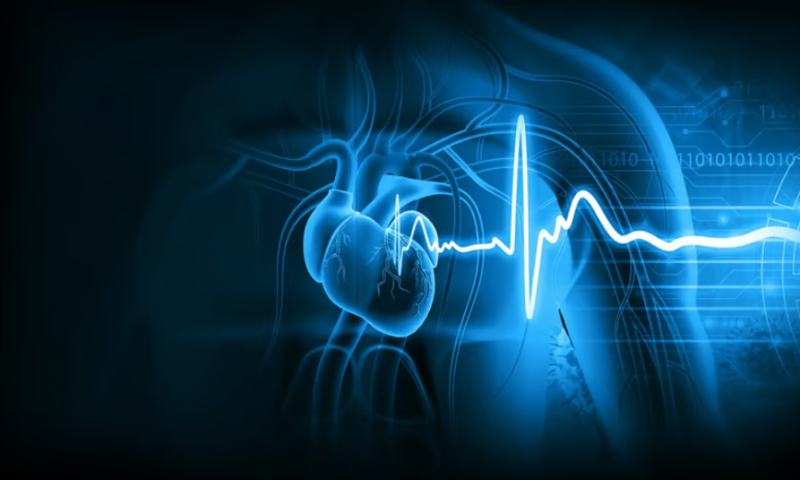Researchers have new evidence that light could be used to restore normal heart rhythm in atrial fibrillation, or afib, another step on the path toward an alternative to using electrical shocks.
In a study published June 21 in the Journal of Internal Medicine, scientists from Leiden University Medical Center in the Netherlands described how they leveraged optogenetics, the use of light to control biological processes, to restore normal heart rhythm in rat models of afib.
“Shock-free cardioversion of [afib] would allow restoration of regular rhythm at any place and time, which may improve the prognosis and quality of life of patients suffering from [afib],” corresponding author Daniël A. Pijnappels, Ph.D., said in a press release. “We hope that our paper will contribute to the realization of this much desired option in clinical practice.”
Afib is an abnormal heart rhythm that arises from improper electrical activity in the upper chambers of the heart, or the atria. This causes them to shake rather than contract, preventing them from moving blood down to the heart’s lower chambers, or ventricles. This stagnant blood can wind up forming blood clots, putting the patient at risk of a heart attack or stroke. Afib affects around 2.5 million people in the U.S., most of whom are over age 65.
Managing afib requires a multi-faceted strategy. Patients are given anticoagulants to prevent blood clots and antiarrhythmic drugs like amiodarone—trade names Nexterone and Pacerone—to keep the heart beating normally. They may also receive beta blockers or calcium channel blockers to slow the rate of conduction between the atria and the ventricles, stabilizing the heart rate.
Some patients also require mechanical intervention to control their heart rhythm. That could mean a surgical procedure called a cardiac ablation, where tissue in the heart is altered to normalize electrical signals or the implantation of a device like a pacemaker. For patients with severe symptoms, especially in the case where afib is preventing blood from being distributed to the rest of the body, clinicians must perform electrical cardioversion, an outpatient procedure where electrical paddles or patches are used to shock the heart back into a normal rhythm.
While electrical cardioversion works, the patient must be sedated, which comes with its own set of risks. The procedure also can’t be performed outside of a clinical setting, endangering patients who need immediate cardioversion but don’t have easy access to care. Finally, the electricity can burn patients’ skin—treatable, but painful nonetheless.
Heart researchers have been exploring the use of optogenetics in cardioversion for some time, potentially in the form of devices that automatically detect a wayward heart rhythm and correct it using light—like a pacemaker, but with light rather than electricity. The technique requires first a gene therapy to get the heart tissue to express channelrhodopsin, light-activated ion channels found in algae, then controlling them with light.
As challenging as this sounds, it’s already been done by Pijnappels’ team: In a 2019 study on mouse models of afib, the scientists showed that it was possible to detect and restore normal heart rhythm by expressing and activating channelrhodopsins through the chest wall.
But questions remained about whether the technique could be translated further. It was one thing to restore the rhythm in mice, but what about larger animal models?
To answer that, the Pijnappels lab turned to rats. The researchers first gave them adeno-associated virus vectors that encoded channelrhodopsin that would respond to red light, which would also be required for the technique to work in humans. Next, they induced a subtype of afib called sustained afib—a type that requires cardioversion—doing so in both young and aged rats so they could model age-related structural changes to the heart. The scientists then irradiated their exposed hearts with pulses of light.
The light was able to convert afib back to a normal rhythm in all of the models within three consecutive pulses. Given these results, it was time to see whether the same thing could be accomplished through the rats’ closed chests, just as the researchers had done in the earlier study on mice.
The researchers shaved the skin on the rats’ chests and placed a custom-made LED device that delivered pulses of light for 10 milliseconds at a time. They were able to convert the animals’ afib back to a normal rhythm within three pulses at an efficacy rate of 90% compared to 0% in the control animals.
“These findings may encourage further investigations into large animal models, advancing the field of cardiac optogenetics and its potential clinical applications,” the researchers wrote in their paper.
The researchers marked off another item on the translatability checklist by testing whether they could transmit light through the atrial wall of human hearts. They were able to pulse light through recently resected left atria from cardiac surgery patients, indicating that, on average, the thickness of the wall wouldn’t be a hurdle in the clinic. The team did note that atrial thickness variations between patients or the presence of excessive fat around the heart might limit the therapy’s effectiveness, however, and suggested that cardiac MRI screening could be useful in determining whether a patient was a good candidate or not.
In sum, “the finding represents an important step forward in the clinical translatability of cardiac optogenetic rhythm control” for atrial fibrillation, the scientists wrote. “Moreover, we provided proof that optogenetic excitation and arrhythmia termination of deeper lying tissue is feasible with already available optogenetic and optoelectronic tools.”

